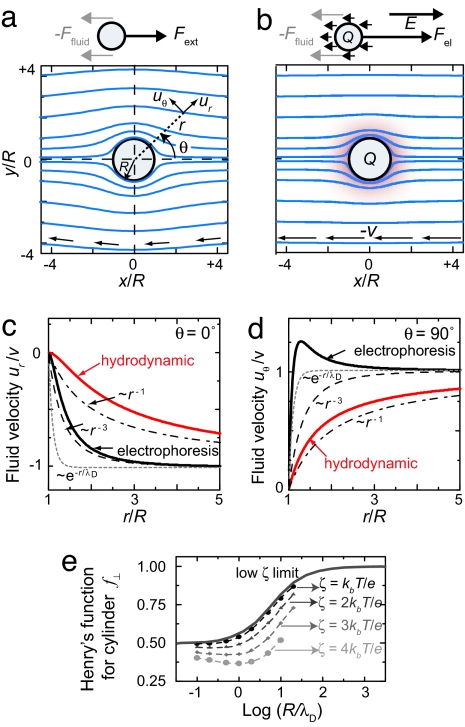Fig 1.
Hydrodynamic vs. electrophoretic motion. (a) Calculated flow lines around a particle that is moved by an external (nonelectric) force. The fluid has a long-range perturbation. (b) During electrophoresis (R/λD = 10), the fluid is only perturbed within a much smaller distance around the particle. (c) Velocity decay in front of the particle for electrophoretic and hydrodynamic motion. The fluid disturbance in electrophoretic motion decays approximately as r−3 (dashed line), which is longer range than the exponential Debye–Hückel decay (dotted line). In hydrodynamic motion the fluid disturbance decays much slower, ∝ r−1 (dash-dotted line). (d) Velocity decay perpendicular to the particle motion (lines are as in c). (e) Numerically calculated values (symbols) (4, 27) of Henry's function f⊥ for a cylinder (Eq. 7) as a function of R/λD for 4 different values of ζ. Dashed lines are guides to the eye. The solid line is the limit of Henry's function for low ζ and no relaxation effect (11).

